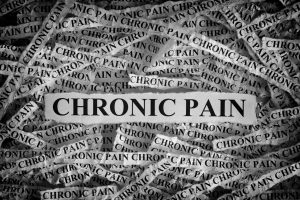More Than 50 Million Americans Live With Chronic Pain
 Personal injury claims typically involve discussions about pain. For some victims, that pain may go away with certain treatments or medications. For others, the pain becomes constant and part of a “new normal.” According to a report in the Washington Post, nearly 1 in 5 Americans (50.2 million people) live with chronic pain.
Personal injury claims typically involve discussions about pain. For some victims, that pain may go away with certain treatments or medications. For others, the pain becomes constant and part of a “new normal.” According to a report in the Washington Post, nearly 1 in 5 Americans (50.2 million people) live with chronic pain.
What is chronic pain?
Chronic pain is generally pain that lasts for at least 12 weeks. According to the Cleveland Clinic, chronic pain can lead to:
- Aches
- Shooting pains
- A burning sensation
- Stiffness
- Throbbing
- A stinging sensation
- A feeling a part of your body is being squeezed
- Fatigue
- Depression
- Anxiety
What are the causes of chronic pain?
Even when the body heals from the initial injury, victims may suffer arthritis or other medical disorders that can cause the pain to continue indefinitely. Some of the incidents which can lead to chronic pain include:
- Car, truck, and motorcycle accidents
- Slip and fall accidents
- Construction accidents
- Birth injuries
- Medical malpractice
- Defective products
- Failure to diagnose or treat a medical disease
What are the most common types of chronic pain?
According to Very Well Health, a health publication, chronic pain usually fits into one of these categories:
- Chronic Back Pain. According to a University of North Carolina study, more than 4 in 5 adults will suffer chronic back pain during their life. The pain often occurs in the lower back. Back pain is often due to:
- Bulging discs
- Spinal stenosis
- Compression fractures
- Soft-tissue injuries
- Fractures of the spine
- Structural deformities
- Chronic Joint Pain. The main cause of chronic joint pain is arthritis. There are different types of arthritis, some of which are due to injuries from an accident, including:
- Osteoarthritis which normally affects the larger joints
- Bursitis
- Tendinitis
- Chronic Nerve Pain. This type of chronic pain affects about 1 in 10 Americans. The pain normally occurs when the nerves are damaged or compressed. A common type of chronic nerve pain is sciatica which runs from the hip down the back of the leg.
A Harvard research study of CDC data regarding chronic pain reported that approximately 41% of participants have chronic back pain, and 44% live with chronic pain in their hips, knees, or feet.
How chronic pain can affect everyday life
Patients complain that the steady, unrelenting persistence of chronic pain affects their mental health in addition to their physical health. Overall, people with chronic pain miss work about 10 days each year. Harvard researchers estimate that about $80 billion each year in lost wages is attributable to chronic pain. Chronic pain costs the country about $300 billion each year in lost productivity, “based on the monetary value of goods and services not produced because of chronic pain.”
The research also found that about 9 million people each year try to manage their chronic pain through physical therapy and massages. Other treatments include chiropractic care, acupuncture, medications, and surgeries. These treatments may help in the short-term, but chronic pain often returns in the long-run.
Diagnosing chronic pain
The problem with diagnosing chronic pain is that a person may not experience pain symptoms while treating with his or her doctor. However, patients are likely to be given diagnostic tests (X-rays, MRIs, blood tests, etc.) to narrow down the root causes.
Normally, your doctor will have you discuss your pain (where it is on your body, what movements affect the pain, and how severe the pain is) by asking you questions that you grade on a 0 to 10 scale. The questions will also focus on:
- How much the pain affects your job
- What conditions make the pain worse
- Whether you’ve had any surgeries
How is chronic pain treated?
The treatments vary depending on the source, cause and severity of the pain. Many patients will be prescribed medications that may be required for the rest of their lives; others may be given different medications at different times, if their bodies acclimate to a certain regimen. In severe pain cases, doctors may prescribe opioids, though this is rarer now that patients and doctors understand how addictive these drugs can be.
Aside from medication, patients may need to undergo:
- Cognitive-behavioral therapy
- Counseling
- Occupational therapy
- Physical therapy
- Hypnotherapy
- Acupuncture/acupressure
In some cases, pain cannot be treated – only managed. In others, the only treatment available may be surgery, which poses its own set of risks. Transcutaneous electric nerve stimulation (TENS), nerve blocks, and spinal cord stimulator implants may all be recommended. Not all of these treatments will be covered by insurance.
At Harris Lowry Manton LLP, we fight aggressively on behalf of clients living with chronic pain to hold the individuals and businesses that caused your injuries accountable for your pain and suffering, medical bills, lost wages, and property damage. We work with your doctors to verify just how painful your injuries are, what types of injuries you have, and what treatments you will need for the rest of your life. Over the years, we have obtained settlements and verdicts worth millions of dollars for our clients, while fighting on their behalf.
To assert your rights to hold the people who caused your chronic pain and your injuries accountable, call our Atlanta office at 404-998-8847, our Savannah office at 912-417-3774, or use our contact page.

One of the nation’s top trial attorneys, Jeff Harris is an award-winning litigator who handles high-profile, complex cases across a wide variety of practice areas. He excels at securing justice for clients who have been seriously injured or killed, holding responsible parties accountable for their actions as well as their negligence.
Read more about Jeffrey R. Harris here.
